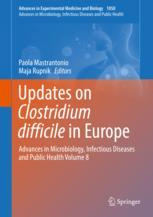

Most ebook files are in PDF format, so you can easily read them using various software such as Foxit Reader or directly on the Google Chrome browser.
Some ebook files are released by publishers in other formats such as .awz, .mobi, .epub, .fb2, etc. You may need to install specific software to read these formats on mobile/PC, such as Calibre.
Please read the tutorial at this link: https://ebookbell.com/faq
We offer FREE conversion to the popular formats you request; however, this may take some time. Therefore, right after payment, please email us, and we will try to provide the service as quickly as possible.
For some exceptional file formats or broken links (if any), please refrain from opening any disputes. Instead, email us first, and we will try to assist within a maximum of 6 hours.
EbookBell Team

5.0
98 reviewsThis book outlines the currently available clinical, epidemiological and experimental data on Clostridium difficile infection (CDI) with special emphasis on studies and results achieved in Europe.
The incidence and severity of CDI has increased significantly over the last decade, and the book explains why C. difficile, recently reclassified as Clostridioides difficile, remains a significant challenge, also from economic perspective, to health care systems all over the world. The different reservoirs of this ubiquitous microorganism are reviewed as well as the different factors contributing to its virulence, such as toxins and biofilm formation. The rapid evolution of antibiotic resistance is clearly a concern and in a specific way can influence the CDI epidemiology. Additionally, new emerging strains and comparative genomics studies are discussed for their relevance from epidemiological and evolutionary point of view.
The book also gives an overview on diagnostics, therapy and surveillance, all of which are still challenging. Therefore, a closer look is taken on the effect of probiotics as an alternative to antibiotics, for prevention and treatment of CDI. Fecal transplantation from healthy donors, passive immunotherapies and vaccines for patients with recurrences are also discussed in dedicated chapters.
The book closes with a summary of the history and the achievements of the European Society of Clinical Microbiology and Infectious Diseases Study Group for Clostridium difficile (ESGCD) written by the current and past presidents of the Society. It is the aim of this book to raise awareness on CDI and to disseminate updated information on its prevention, diagnosis and treatment.